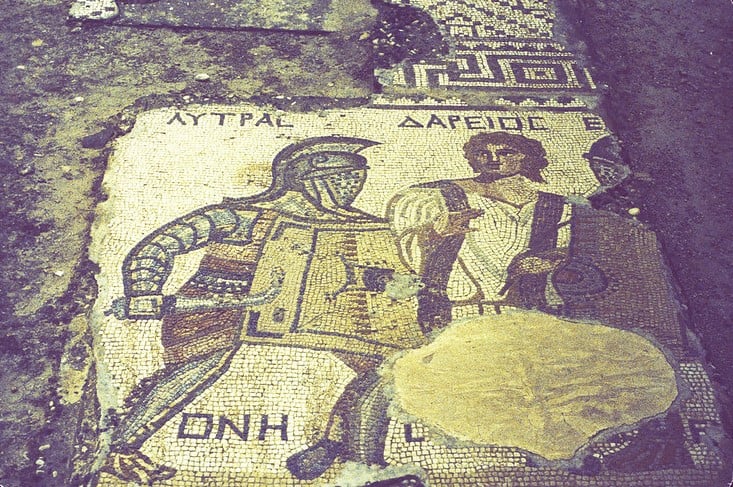
Cyprus carries a long history mirrored through archaeological sites scattered in between its cities and the countryside.
From expansive ancient cities and the mysterious Neolithic settlements, to the many Roman ruins and unyielding medieval castles, the island boasts many historical sites that bring to life its rich history.
Archaeological site of Amathus
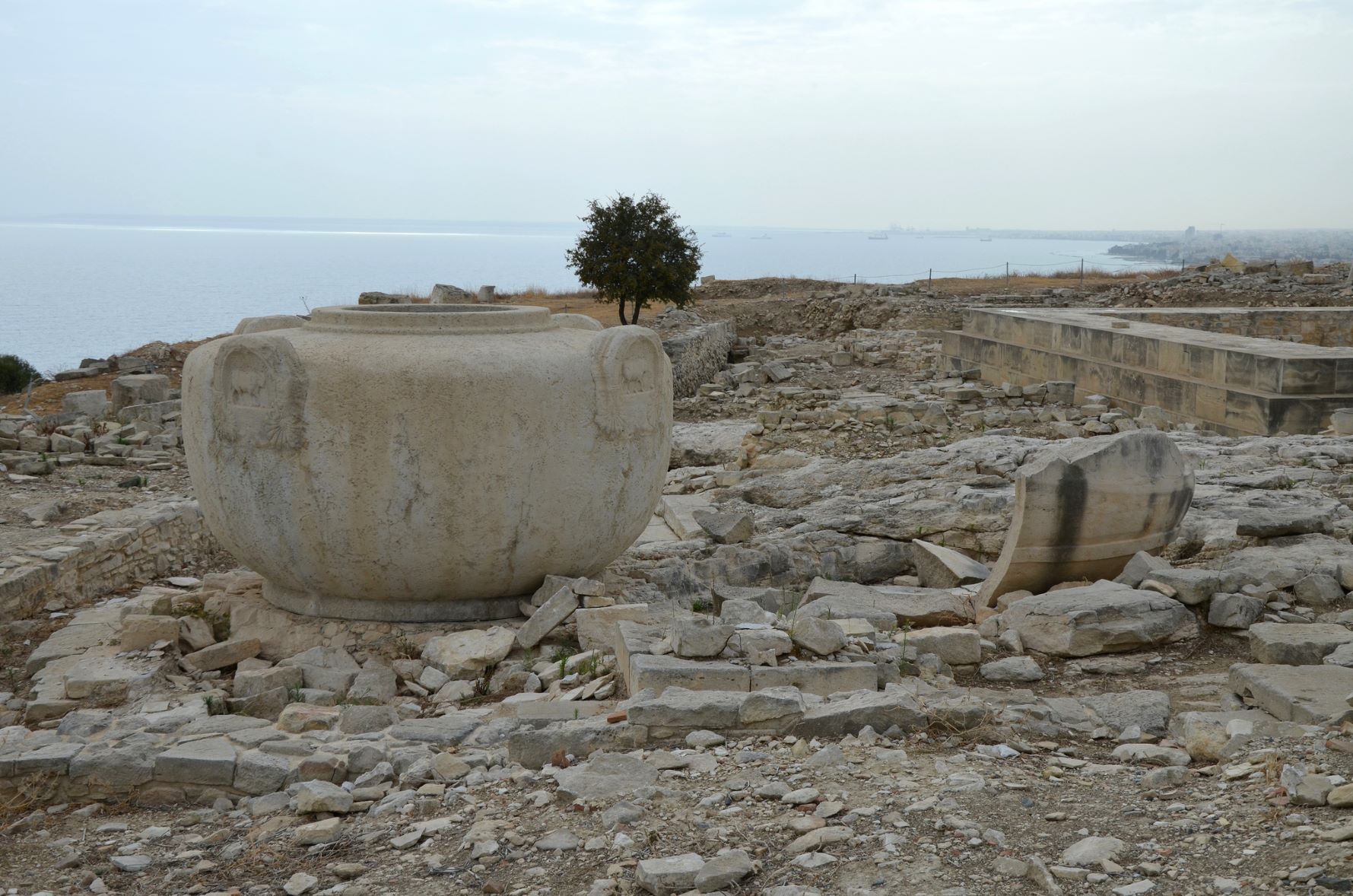
Amathus, located 11km east of the city of Limassol, is a settlement dating back to 1100 BC as well as one of the UNESCO World Heritage sites.
Throughout the course of its history, the city became the home of various empires such as the Greek, Persian, Ptolemaic, Roman and Byzantine. The settlement was utterly destroyed by the Arabs in the 7th century, and afterwards never re-inhabited.
Amathus is also the place where the most massive stone vase in the world was found, a large amphora that weighs 14 tons and reaches 1.85 meters height that was used for religious rituals as a water container.. This marvelous treasure is now kept in the Louvre Museum in Paris.
Kourion
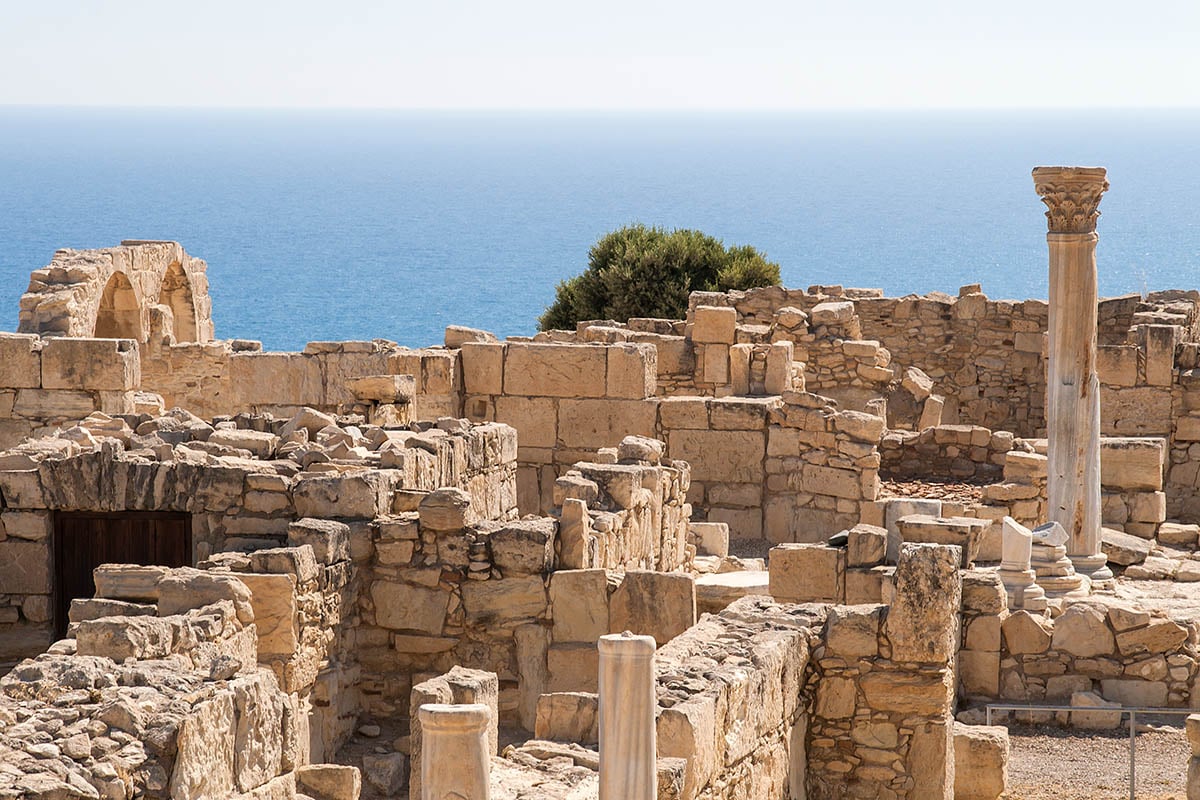
Kourion, also known as Curium, is an impressive archaeological site near Limassol in Cyprus containing mostly Ancient Roman and Byzantine ruins.
In fact, it is believed that Kourion was first inhabited during Neolithic times, as the earliest evidence points to 4,500-3,900 BC. The Argives founded the town itself in the 13th century BC.
The location is comprised of several monuments, many of which existed during the Roman period. These include the amphitheater, the forum, the Nymphaeum, the Public Baths, the Fountain House and the House of Achilles.
The House of Gladiators, which dates from the second half of the third century AD, is one of the most notable villas. It gets its name from a series of mosaics depicting gladiatorial combats near its main courtyard.
Due to its excellent acoustics, the ancient amphitheater of Kourion is still used today as a place for theater and music performances.
Sanctuary of Aphrodite
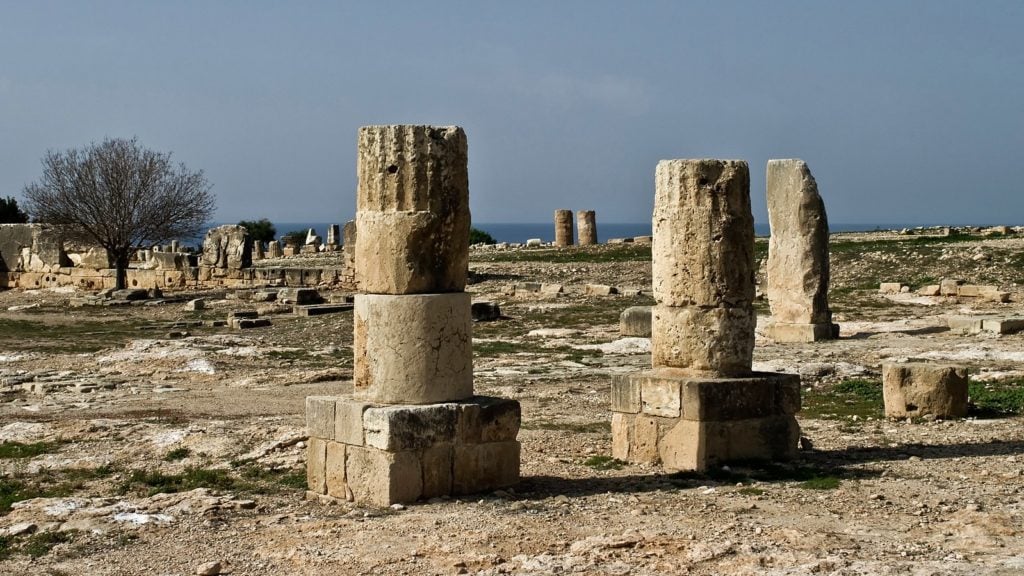
The archaeological site of Palaepaphos (‘old Paphos’ in Greek) is in Kouklia Village and was one of the most important city-kingdoms of Cyprus, as well as the first Cypriot site to be included in the World Heritage List of UNESCO in 1980.
The site of Paphos was a holy place for the ancient Greeks, who believed it to be the place where Aphrodite landed when she rose from the sea. The Sanctuary of Aphrodite Paphia was the center of the worship of the goddess, not for Cyprus alone, but for the whole Aegean world.
Choirokoitia
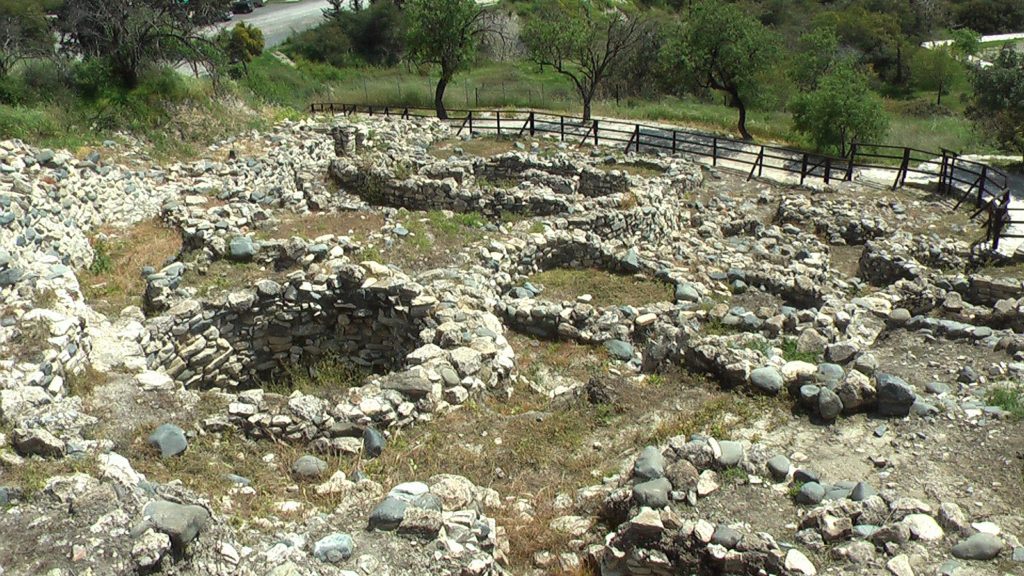
Choirokoitia in Cyprus was a prehistoric agricultural settlement from 7000 BC and the first site of human habitation on the island.
According to UNESCO, Choirokoitia is “one of the most important prehistoric sites in the eastern Mediterranean.”
Today, visitors can see the remains of Choirokoitia as well as reconstructions of the circular huts which once characterised it.
Kolossi Medieval Castle

Kolossi medieval castle is located 14km west of Limassol and is a fine example of military architecture. The castle was originally constructed in the 13th century by the knights of St John and rebuilt in its present form in the middle of the 15th century after a Genoese attack.
The rooftop of the castle offers wonderful views of the surrounding vineyards, which produce the famous sweet dessert wine, ‘Commandaria’, the world’s oldest named vintages.
Paphos Castle
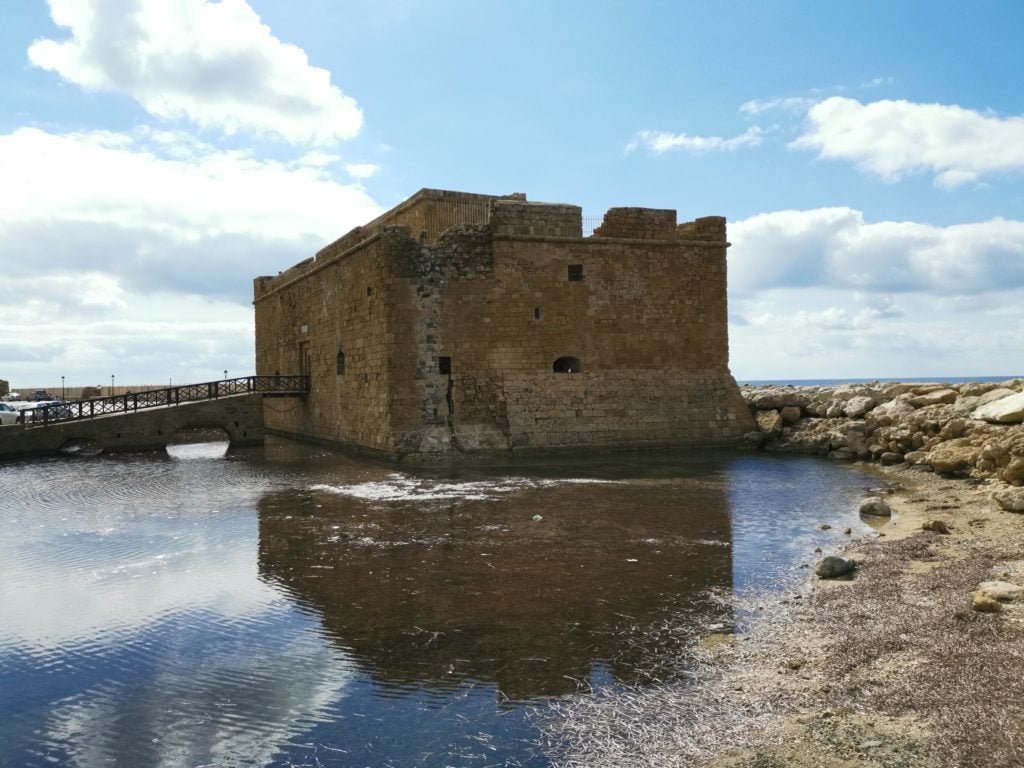
Paphos Medieval Castle, positioned next to the harbour in Kato Paphos, was originally a byzantine fort made to protect the harbor.
It was built by the Lusignans in the 13th century, dismantled by the Venetians in 1570 and rebuilt by the Ottomans after they captured the island in the 16th century. During its long history, the castle was also used as prison cells and storage for salt when the island was a British Colony. It was declared an ancient monument in 1935.
Tombs of the Kings
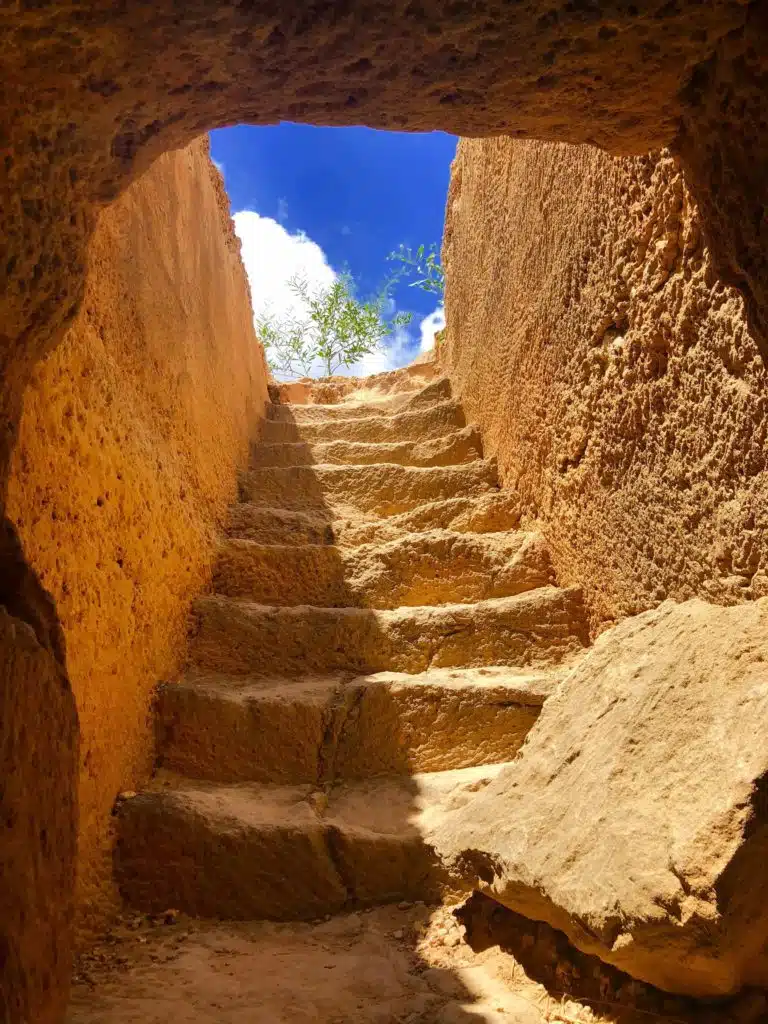
The Tombs of the Kings are part of a large necropolis lying about two kilometers north of Paphos Harbor at the westernmost point of the island of Cyprus. They were designated a UNESCO World Heritage Site, along with Paphos and Kouklia, in 1980.
The crypts, many of which date back to the 4th century BC, are carved out of solid rock, and are thought to have been the burial sites of Paphitic aristocrats and high officials up to the third century AD.
Church of Saint Lazarus
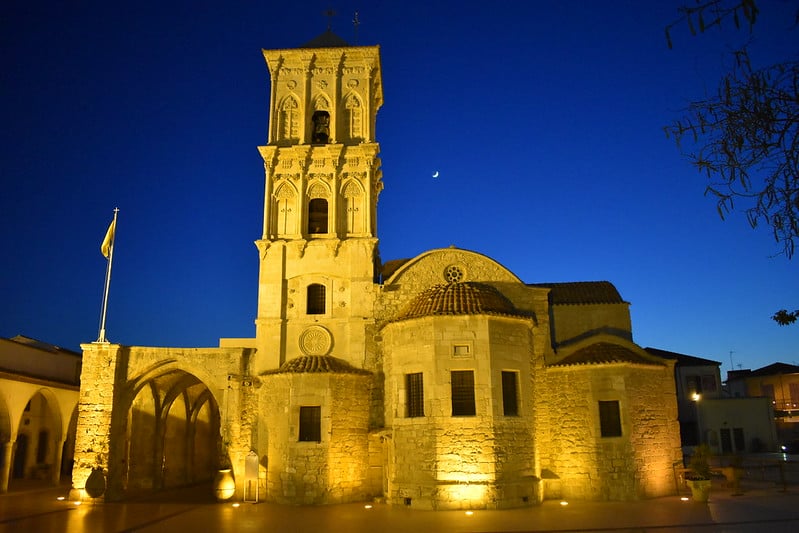
This ancient church was originally built in the 10th century to be the burial chamber of Saint Lazarus. It is situated in the very center of Larnaca and is one of the most significant monuments of the Byzantine Era.
Visitors can enter the crypt of the Church of Saint Lazarus. Used as a mosque during the Ottoman occupation of Cyprus, it was then reverted to a church. It has suffered damage over the years, including a devastating fire in 1970, but has been restored on different occasions.
Nea Paphos
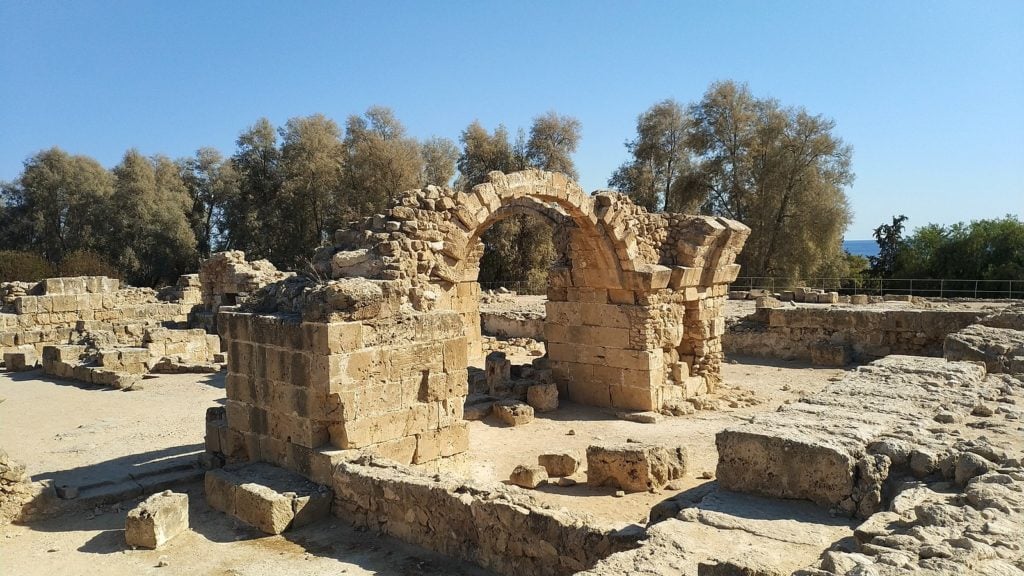
Nea Paphos was founded at the end of the 4th century BC and became a buzzing capital center of Ptolemaic administration one century later. Numerous monuments can be detected among the ruins, such as the remains of the Agora and an impressive ancient theatre.
During the Hellenistic Period, the Ptolemaic Kingdom was an Ancient Greek state based in Egypt. It was founded in 305 BC by Ptolemy I Soter, an Alexander the Great companion, and lasted until Cleopatra VII’s death in 30 BC. Ruling for nearly three centuries, the ancient Greek dynasty of Ptolemies was the longest and most recent dynasty of ancient origin ruling Egypt.
Kalavasos-Tenta
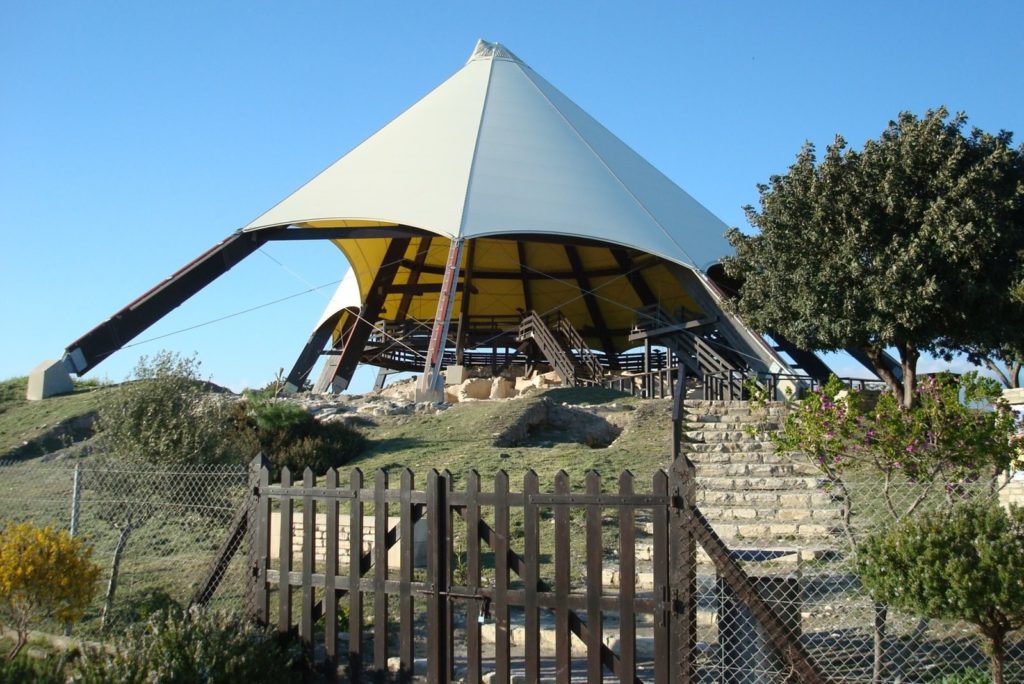
Kalavasos-Tenta is one of Cyprus’ most significant Neolithic settlements, four kilometres from Kalavasos in the Larnaca District. The earliest occupation at the site has been dated to around 8000 BC and it was still settled during the 6th millennium BC. The ruins at Kalavasos-Tenta include the remains of the winding walls of what were the circular huts of the village.
The site is protected by a distinctive, modern cone-shaped roof, which is a local landmark and a popular tourist attraction.
See all the latest news from Greece and the world at Greekreporter.com. Contact our newsroom to report an update or send your story, photos and videos. Follow GR on Google News and subscribe here to our daily email!



